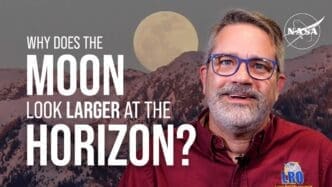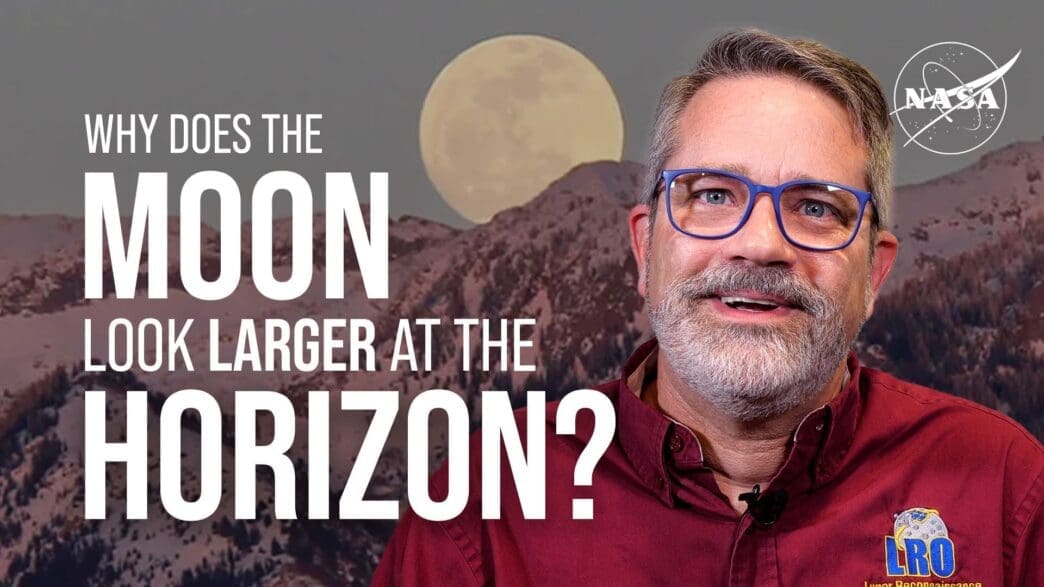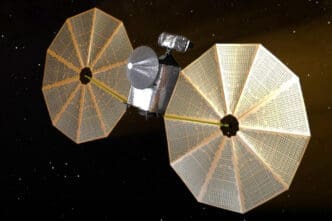Isn’t it mesmerizing how the moon seems to grow as it hovers just over the horizon? 🌙 You’re not alone if you’ve noticed this. Many have pondered this mystery for centuries.
From Aristotle to modern NASA scientists, the curious case of the moon’s changing size remains unsolved. Interestingly, this lunar illusion isn’t due to the atmosphere magnifying it. The moon isn’t closer to us; in fact, it’s slightly farther away when it’s near the horizon.
Historical Perspectives on Lunar Illusions
For over two millennia, intellectuals have been fascinated by the moon’s apparent size changes. Aristotle himself mentioned this illusion as early as ancient times. Despite advancements in technology and science, the enigma persists. As intriguing as it has been for scholars, everyday stargazers also find themselves perplexed when they observe the grand moon at the horizon.
This phenomenon crosses cultural boundaries, captivating people worldwide. Throughout history, various civilizations created myths and stories to explain the moon’s perceived enlargement, blending science with mythology.
The Role of Earth’s Atmosphere
It’s tempting to blame the atmosphere for making the moon look bigger, but in reality, it has the opposite effect. Atmospheric refraction can slightly distort the moon, making it appear somewhat flattened.
The moon doesn’t change its position enough to account for size difference as it appears on the horizon. Rather, it’s approximately 1.5 percent farther than when it is high in the sky. No magnifying lens effect here, just a celestial mystery.
Constellations and Horizon Effects
It’s not just the moon that benefits from this optical illusion. Stars, too, appear larger on the horizon. This phenomenon raises further questions about our perception of space.
As constellations rise and fall, they seem more extensive and commanding. The horizon plays a unique role in how we perceive these celestial bodies. Yet, questions remain about why distant cosmic formations change size in our line of sight.
This enlargement isn’t related to distance. Instead, it could be a complex interplay of psychological and visual factors that influence our understanding of space and size.
Experiments and Observations
Despite numerous experiments, a definitive explanation remains elusive. Scientists have been designing ways to measure and understand this illusion for years.
Experiments have included digital and photographic analysis to identify behavioral patterns in lunar observation. Yet, none have conclusively explained why our view of the moon shifts as it does.
The scientific community remains hopeful. Future advancements might one day solve this celestial riddle. Until then, the intrigue continues to inspire both professional researchers and amateur astronomers alike.
The Human Brain’s Role
Our brains are incredible processors, constantly interpreting our surroundings. When it comes to the moon, however, they might be overzealous.
The horizon is a reference point that our minds use to gauge size and distance. Our brains create a narrative that a large moon equals proximity, even when it’s scientifically inaccurate. It’s a wonderful display of human cognition playing tricks on us, showcasing the power of perception.
This visual puzzle reveals how our cognition interprets size based on context rather than reality. Our minds weave stories from the visual cues around us.
Cultural Interpretations
Across time and cultures, the moon has played a significant role in folklore and storytelling. This optical illusion only adds to its allure.
In many cultures, the enlarged horizon moon is awe-inspiring, leading to legends and tales of magic or divine intervention. Such interpretations enrich cultural heritage and human imagination.
Our fascination with the moon transcends scientific inquiry, touching the realms of creativity and tradition. Even myths have persisted because of such enigmatic phenomena.
Continuing the Quest
Space continues to offer mysteries, with the horizon moon being just one. Each observation brings us closer to the truth.
Scientists and enthusiasts are persistent in their efforts to understand this optical illusion better. New technologies might soon provide new insights into this age-old question.
The Moon’s Appeal
There’s something magical about watching the moon rise, hypnotizing in its apparent enormity. It invites us to pause, gaze, and think.
Despite our scientific pursuits, the moon remains a reminder of the wonders of the universe. Its apparent size on the horizon adds to its mystique.
While science seeks to demystify phenomena, some enjoy the mysteries of outer space, with the moon’s larger horizon appearance sparking wonder and inquiry.
While the mystery of the larger horizon moon lingers, it continues to captivate our imaginations and scientific curiosity. Our quest for understanding persists.







